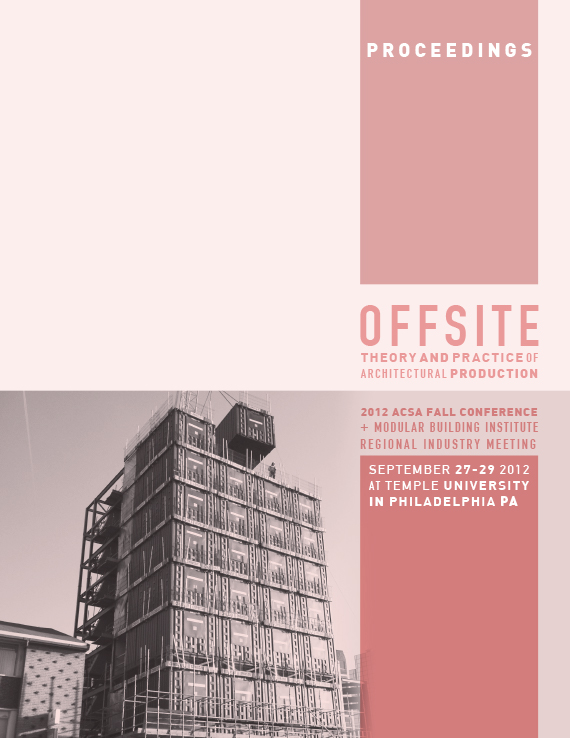Author(s): Rocco J. Ceo III
As Design/Build goes getting anything designed and then built at all withstudents has great pedagogical value. Seeing lines turn into built form andcomparing the conceptual gravity of an idea with the real weight of materialsis intoxicating. With a focus exclusively on projects made for the publicrealm this paper focuses on the opportunities and challenges offered bybuilding off-site, off-the-grid, for the road and then re-assembled on site.Modular, transportable architecture without cranes these projects offer lessonsabout what can be done in the public realm on limited budgets andtime-frames with unconventional production strategies.Project One: Built for an Orchid company that promotes the public value ofepiphytic plants for public consumption, this project is about air, cypress,and oranges. Air gives form to the trellised pavilion made to simulate shade,air movement and the display of orchids. The pavilion acts as an outdoorclassroom, site furniture and as a casual classroom for the owners. Thestructure is made of reclaimed cypress and made to resemble the basketsthat are typical support systems for the orchids. The oranges while not partof the horticultural context of the project were used to move the structureand allowed students to easily slide 1700 pound components into placefor transport to the site, and onto its foundation in a rural nursery that is“Vanda Heaven.”Project Two: Made for a not-for-profit group (Earth Learning) this project isan organic mobile kitchen to teach the value of sustainable agriculture inan urban environment and the virtue of supporting local food. Built to beoff-the grid with solar generated electricity, hot water and an open structurethat invites its users into the experience of the kitchen, this project providesa new model for the food-truck/street-food movement. Using an old mobilehome the structure was stripped to its chassis, recycled then a new formand use is constructed to serve as a teaching and service kitchen. Used toteach inner city kids about organic healthy food production when in the city,on the weekends it is rented by rural farmers to process produce typically bediscarded due to lack of curb appeal.Project three: A set-up and take down scenario provides the seasonal ritualfor the staff of Everglades National Park, Flamingo, and the site of the thirdproject. Designed and built to be seasonal accommodations for visitors whowant an overnight experience lodged between a tent and permanent cabin,the Eco-tent, prototype is being built and will ultimately be repeated to provide40 off-the-grid cabins to replace those destroyed by past hurricanes.The open, modular, and sculptural, the new Eco-tents are designed to bepartially disassembled and stored during the off-season (December throughMay). These cabins recall nautical and natural forms found in the park andare built of reclaimed materials that are a model for how to live in harmonywith a world famous ecosystem.
Volume Editors
John Quale, Rashida Ng & Ryan E. Smith
ISBN
978-0-935502-85-5

 Study Architecture
Study Architecture  ProPEL
ProPEL 
